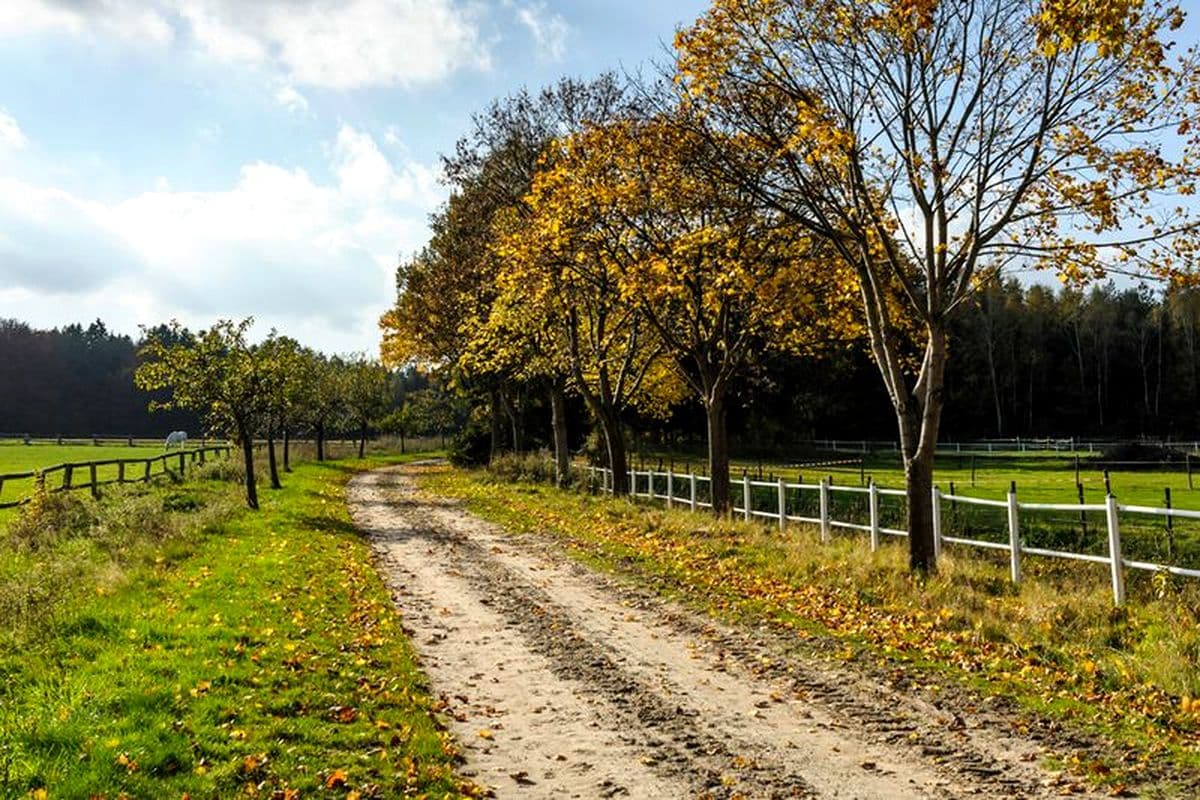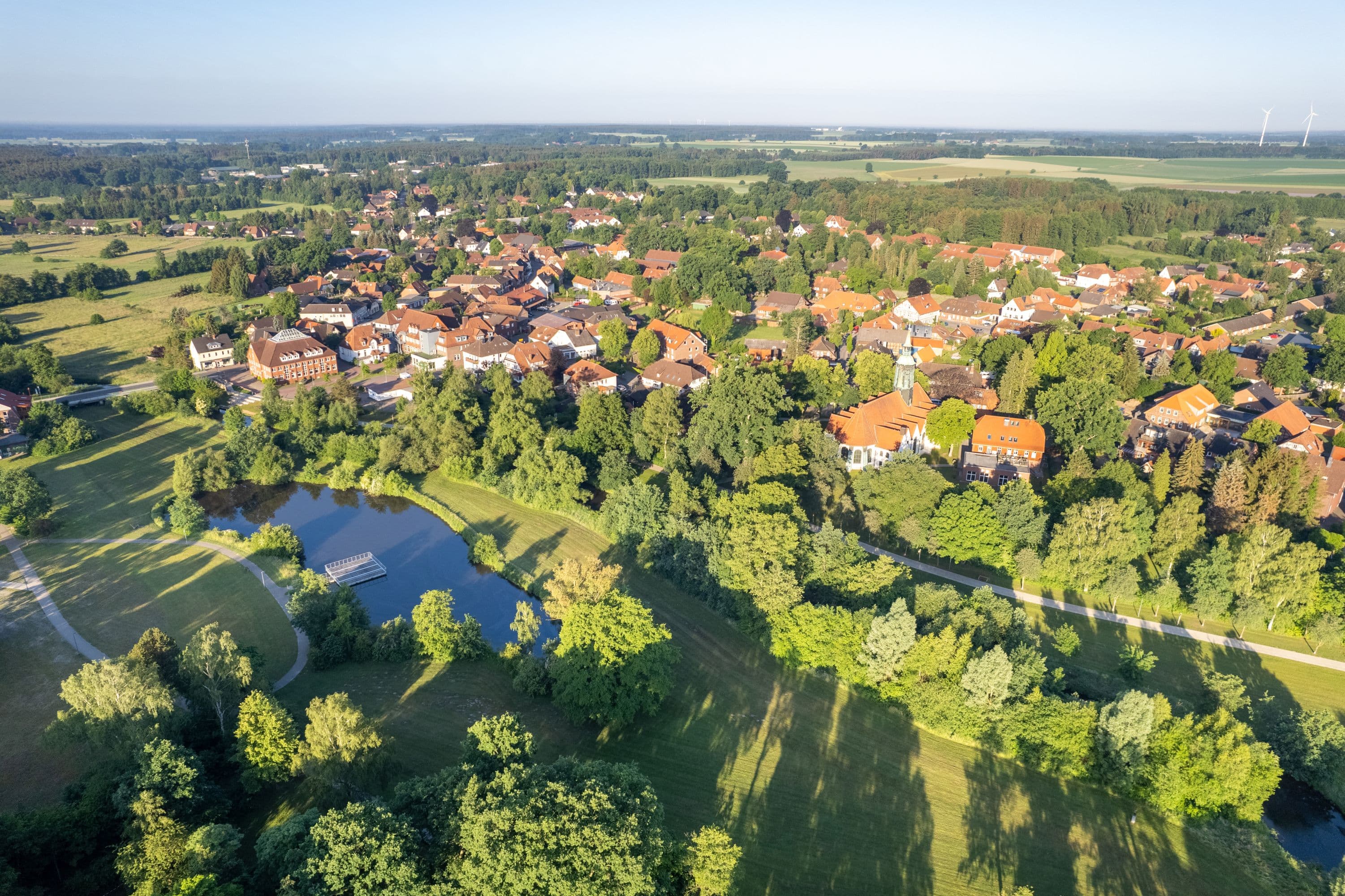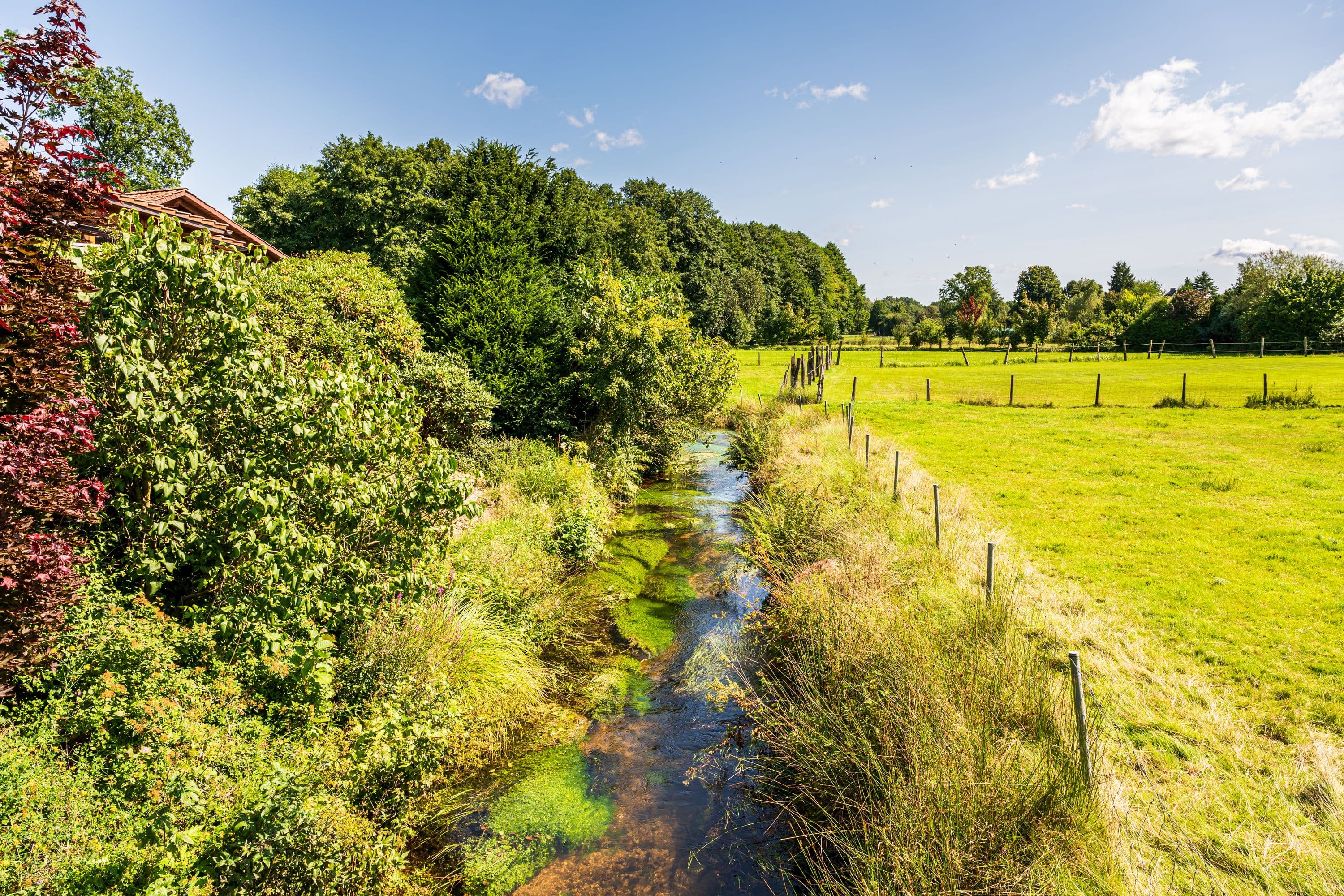
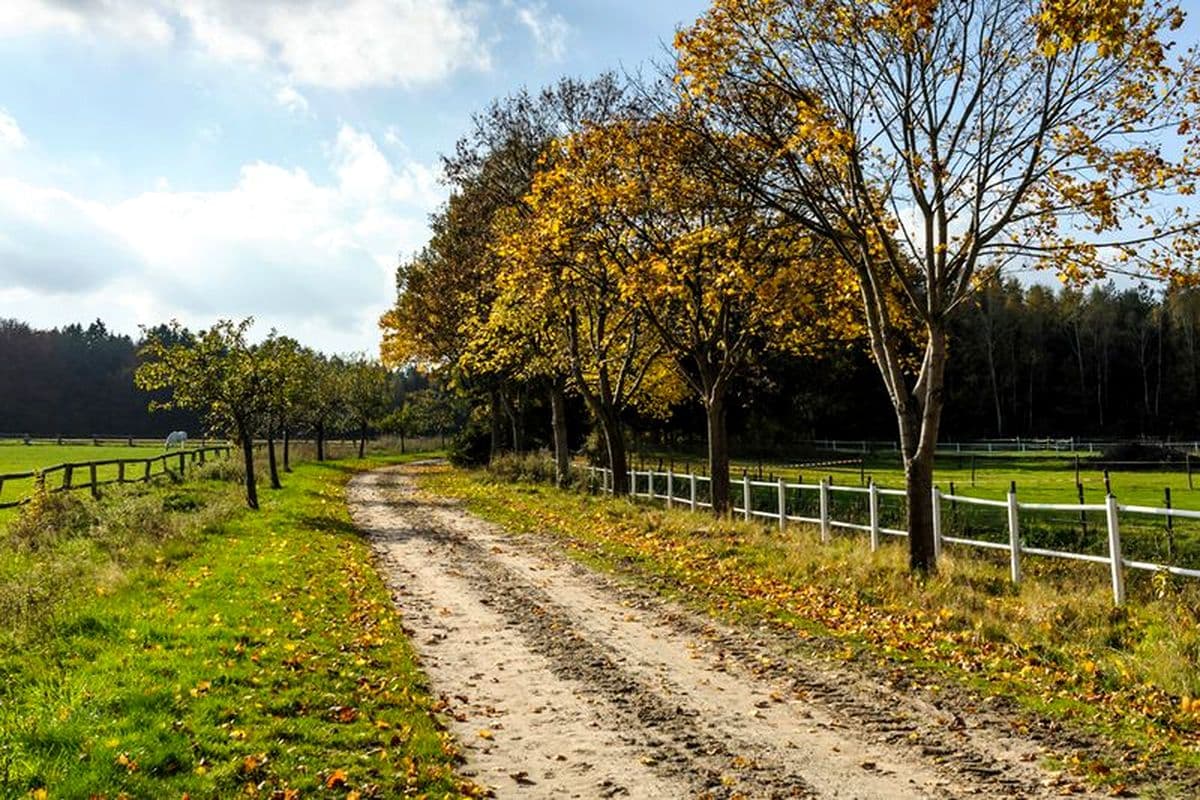
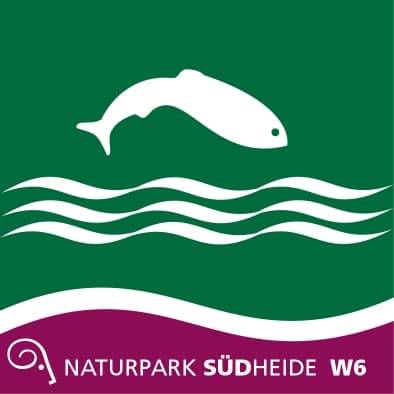
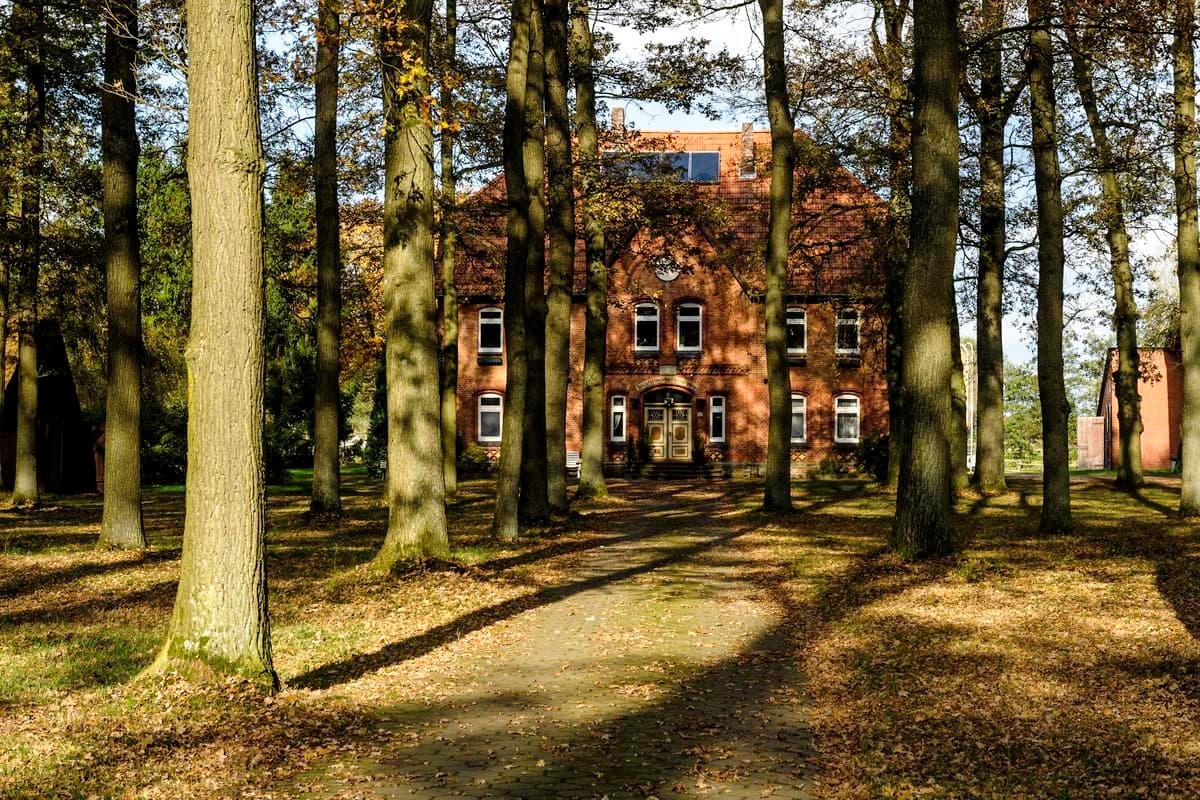
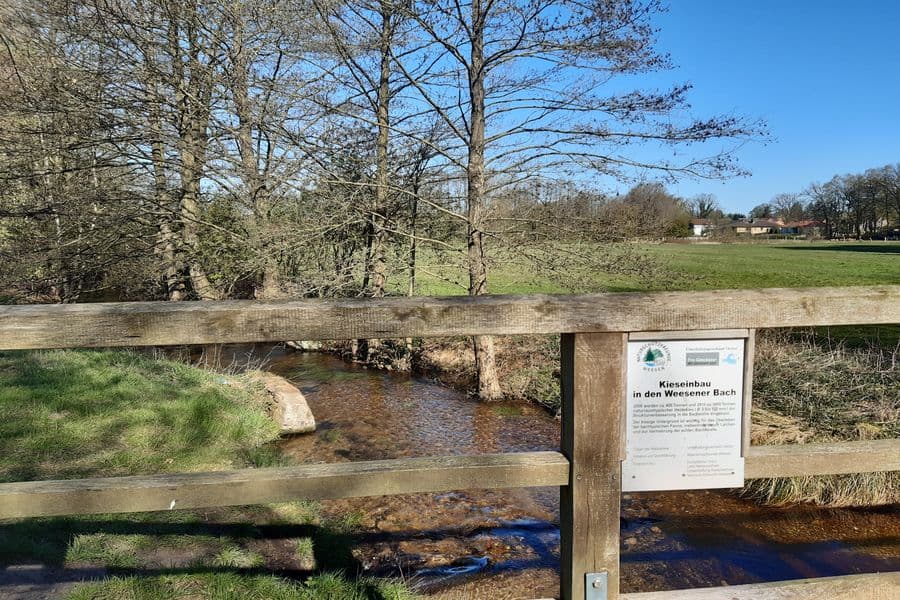
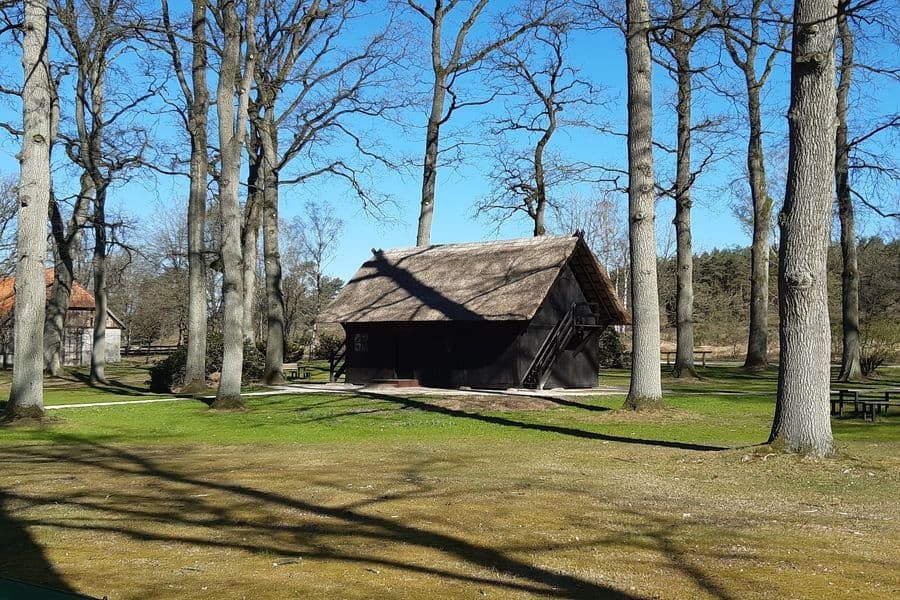
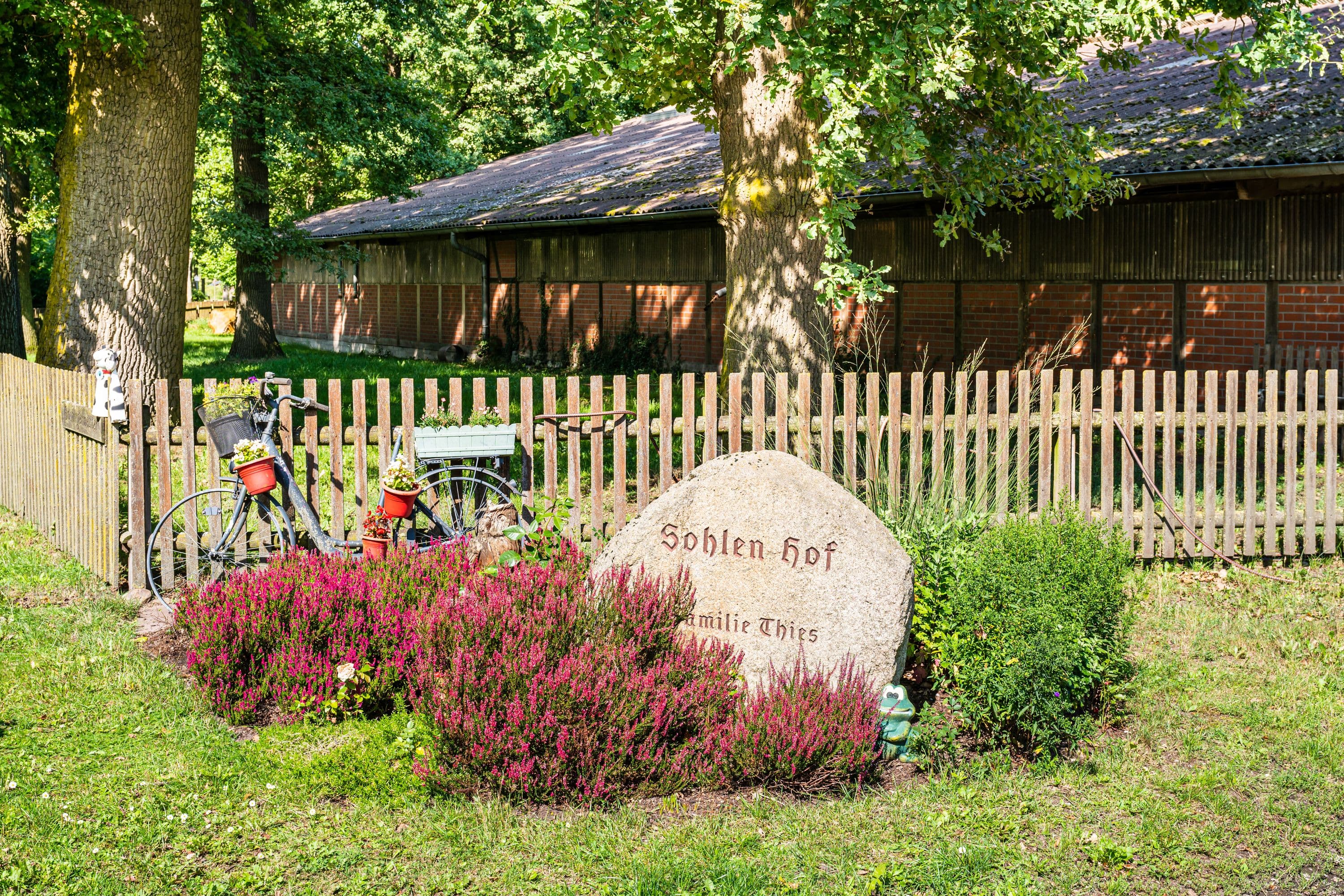
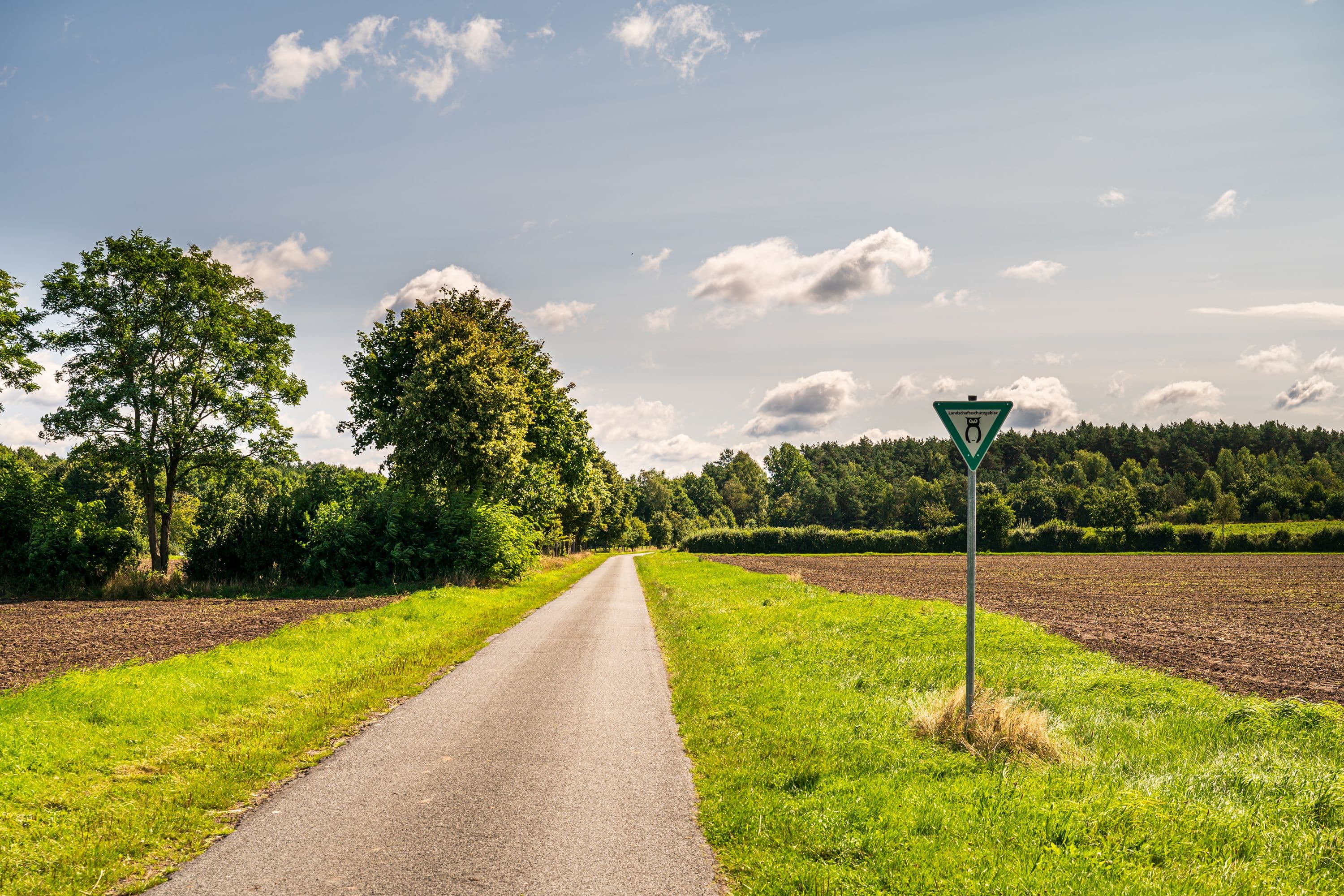
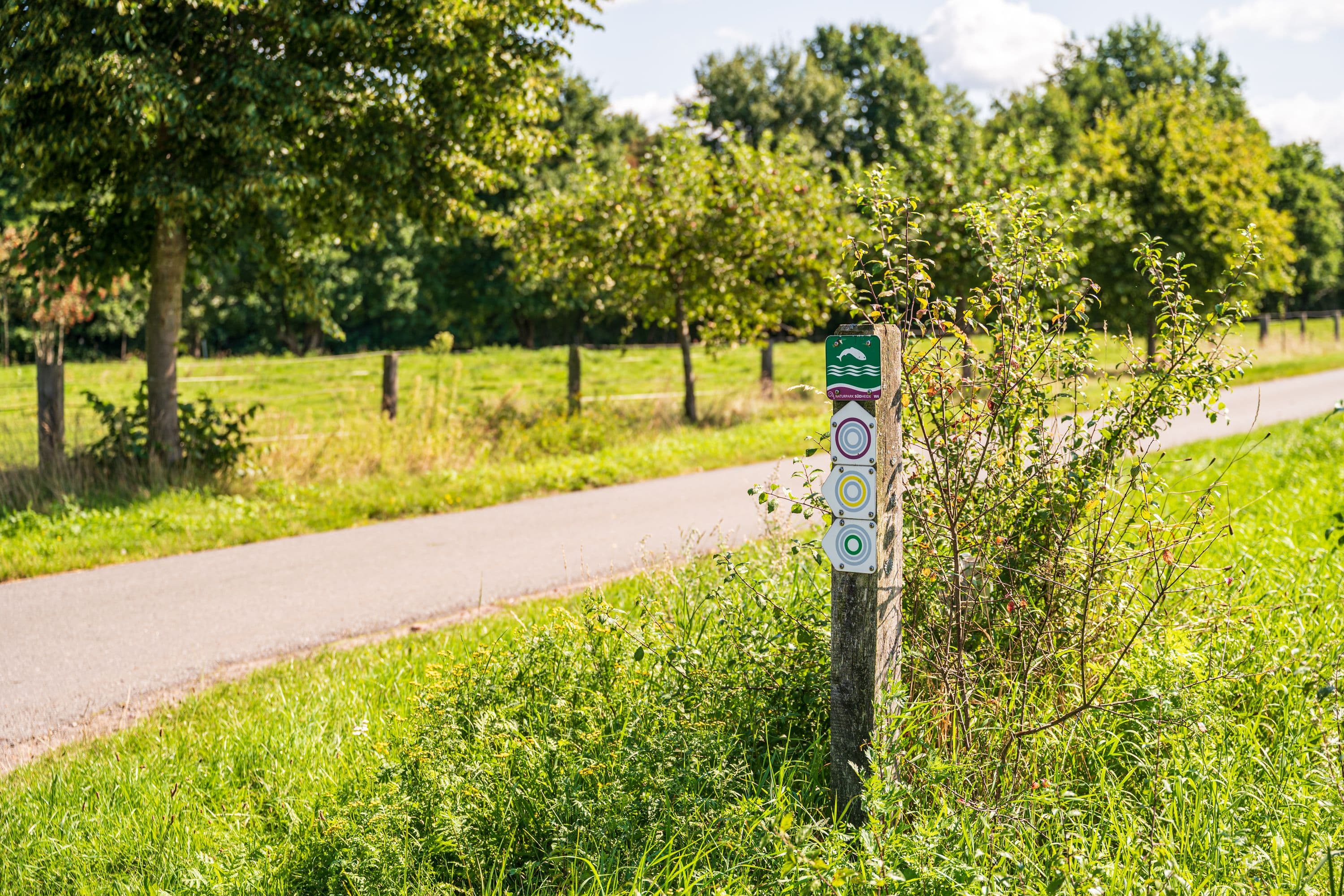
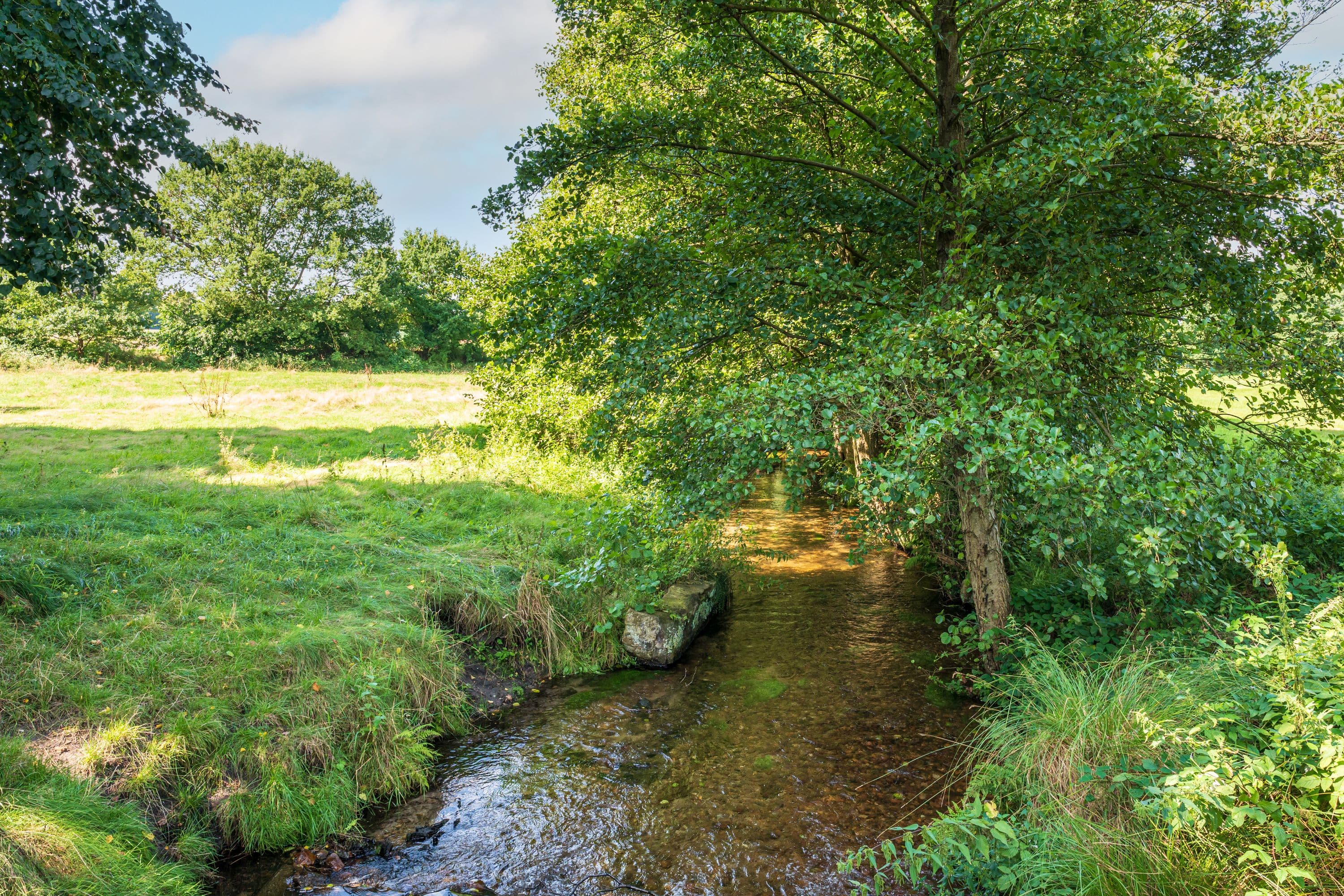
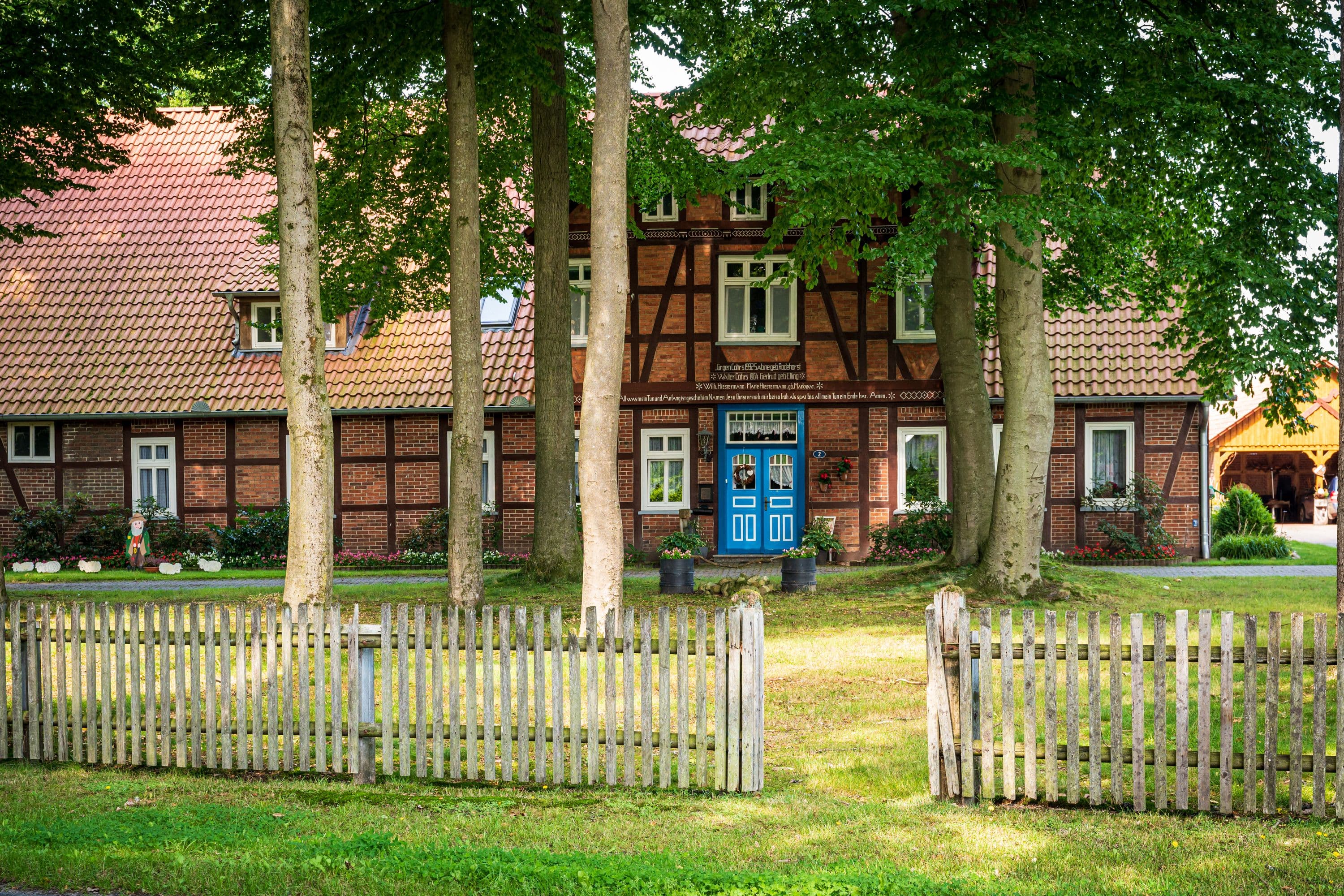


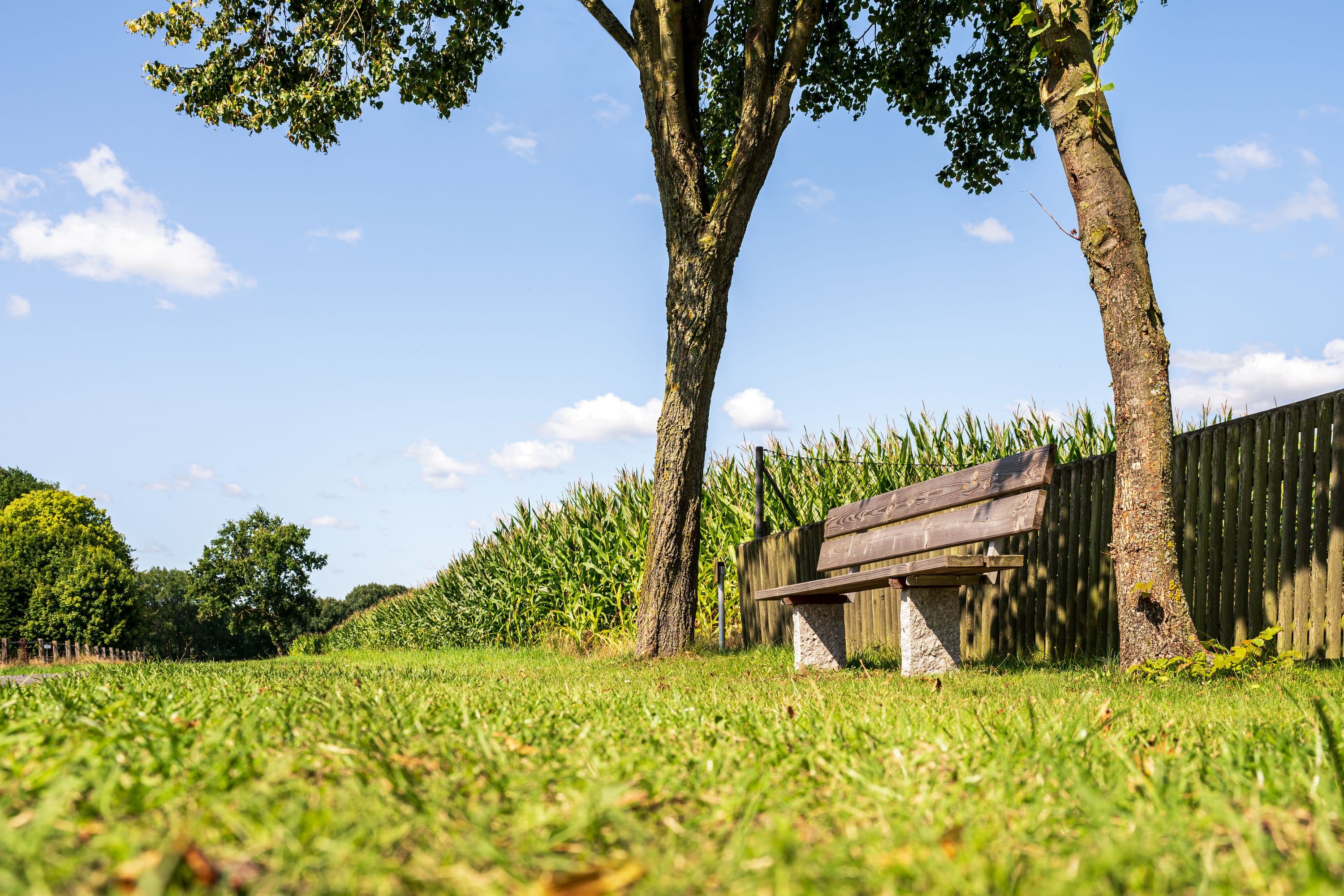
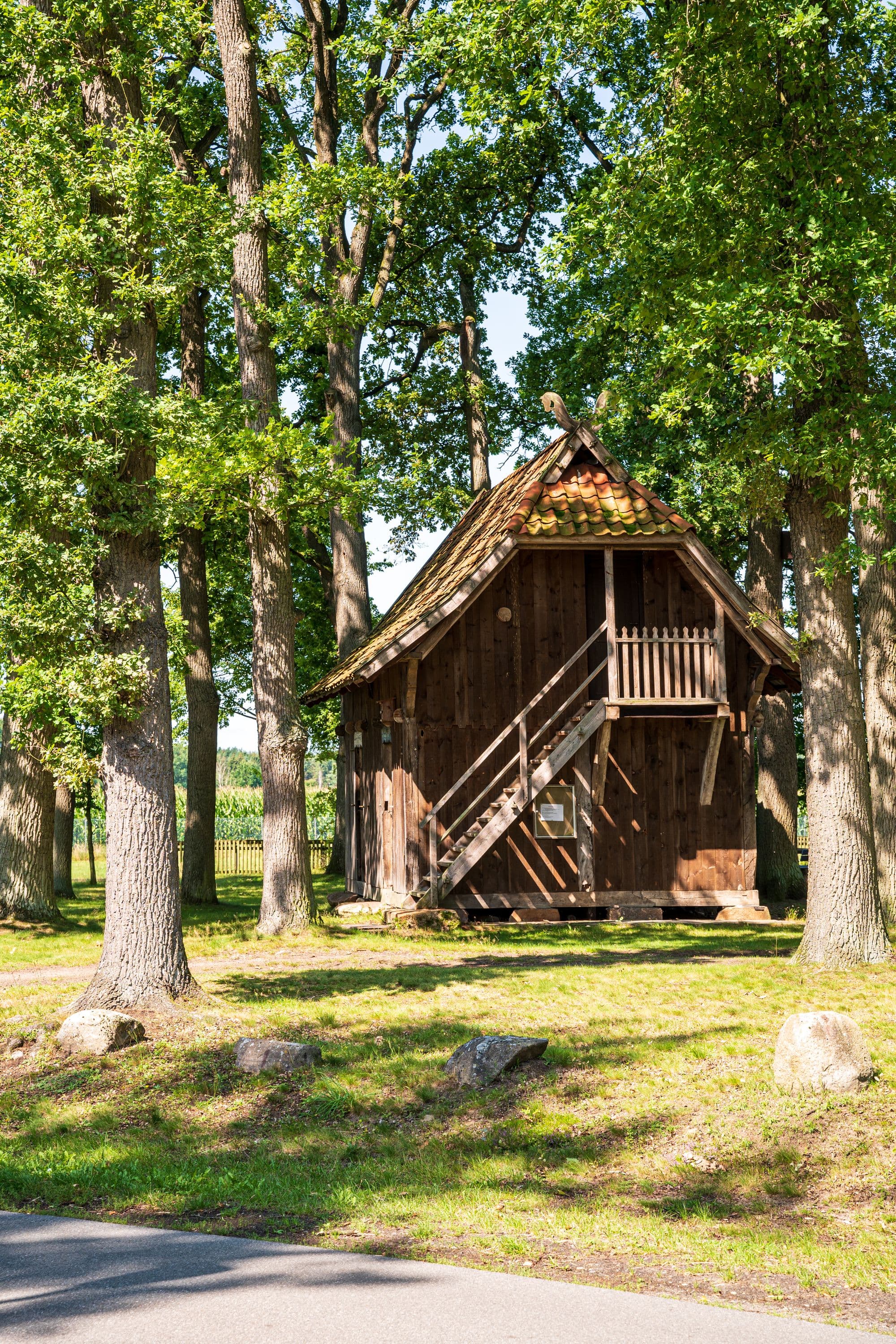
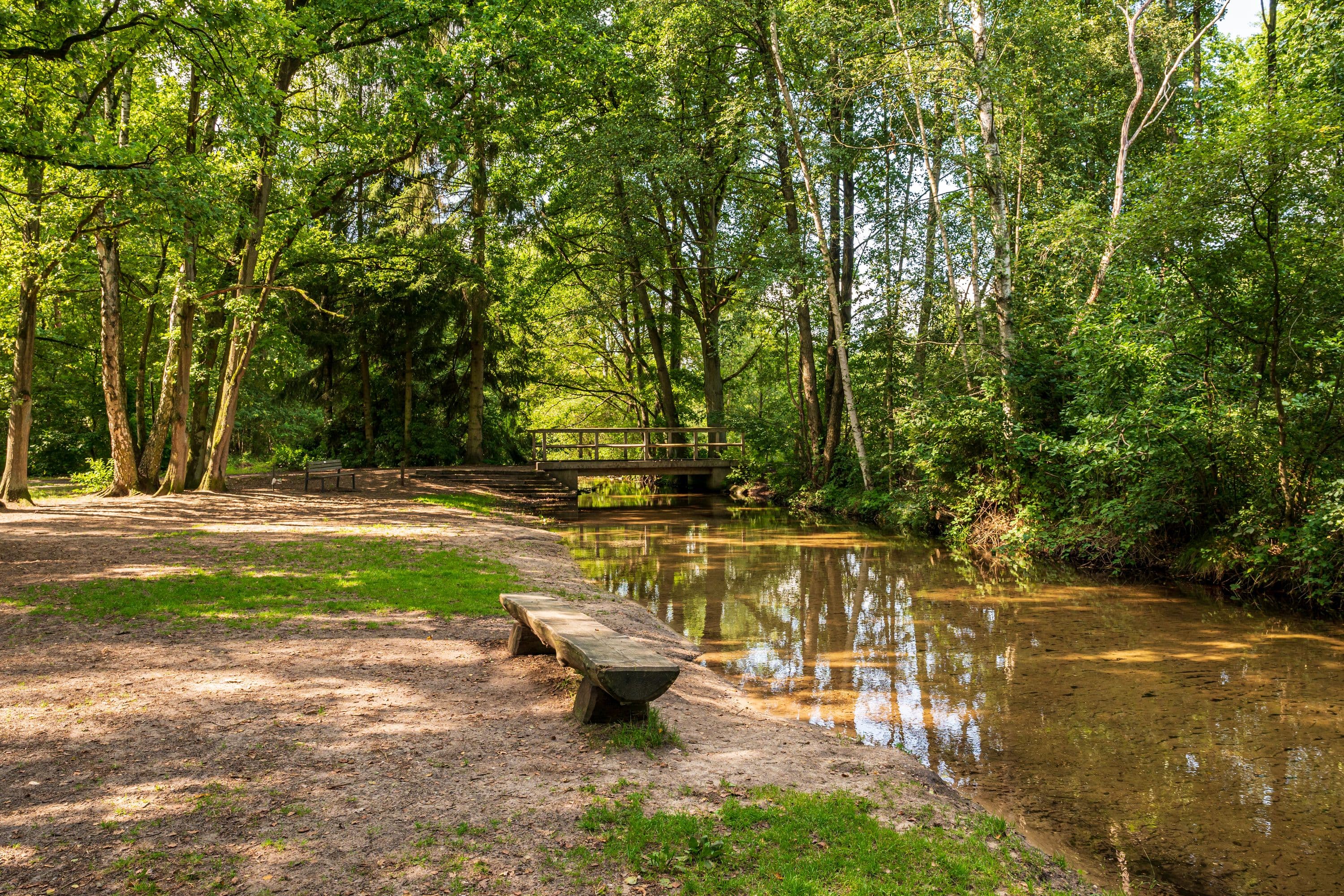
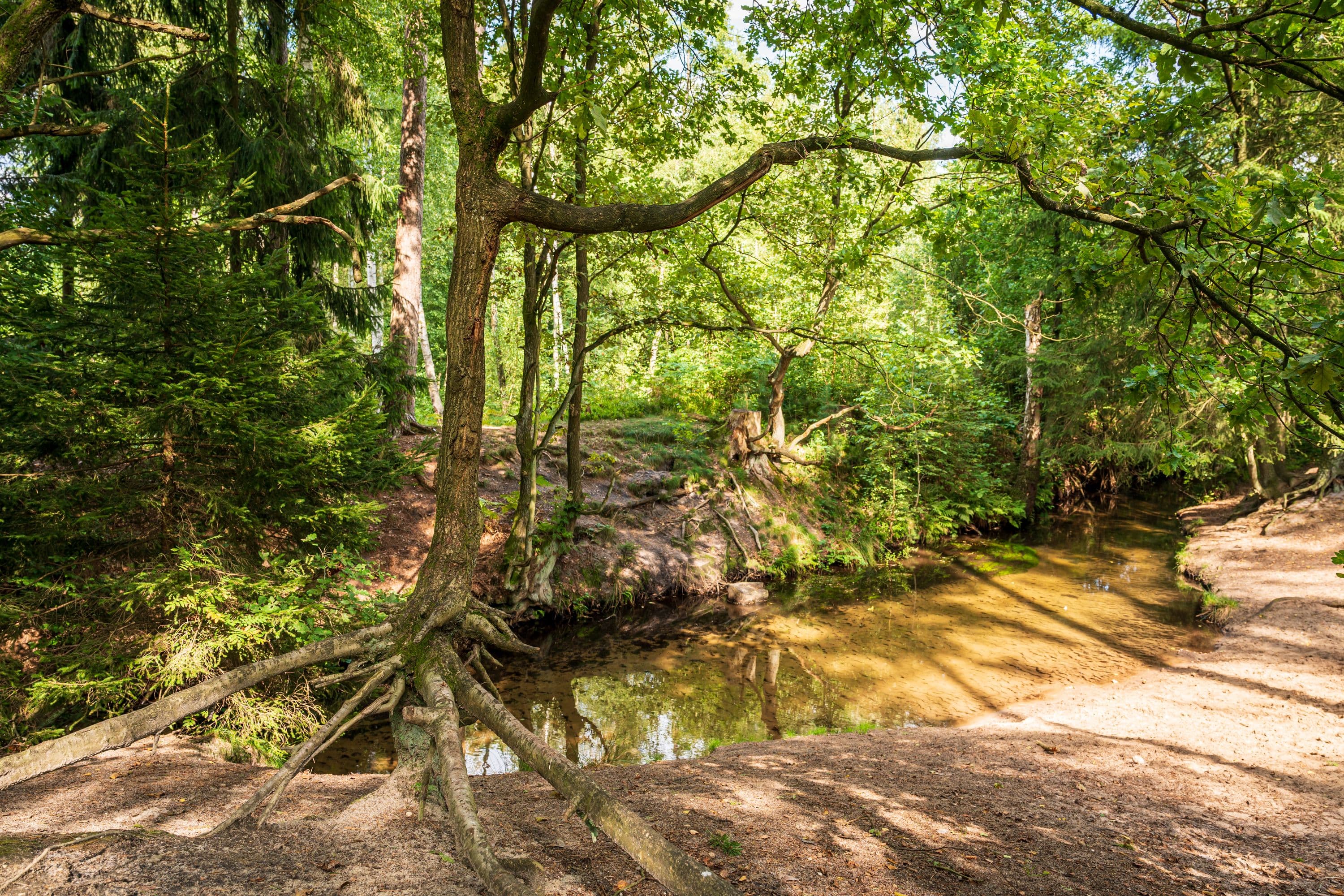
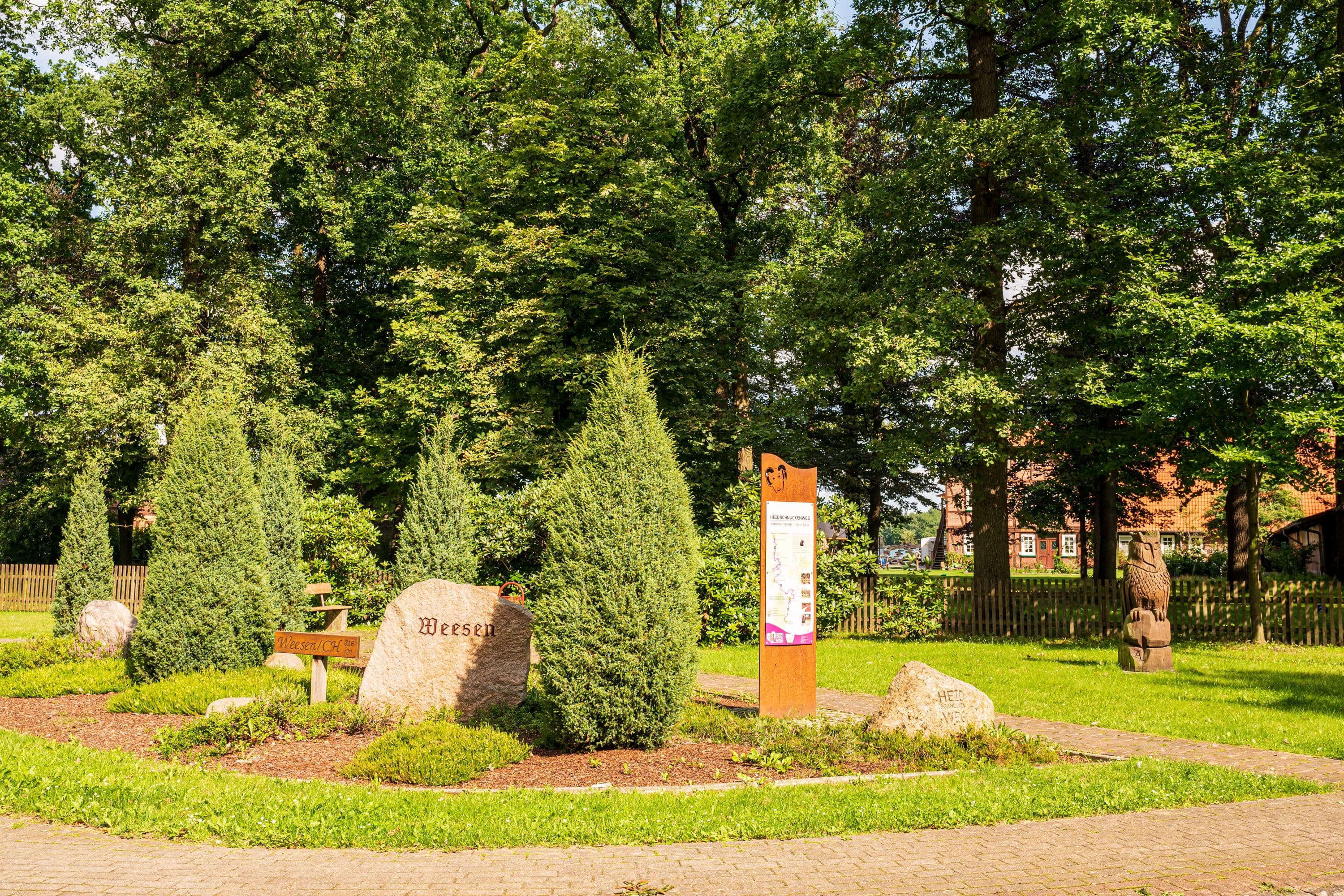
Wanderweg In einem Bächlein helle
Der nebenstehende Streckenverlauf zeigt die mittlere Tour an.
Am Ende der Beschreibung unter "Das dürfte Sie interessieren" finden Sie alle 3 Wandertouren.
Der Weesener Bach
Von seinem Quellgebiet bei Lutterloh bis zu seiner Einmündung in die Örtze bei Hermannsburg legt der Weesener Bach 11 km zurück. 1999 wurde die Bachniederung als Naturschutzgebiet ausgewiesen. Naturnahe Gewässerabschnitte, Bach begleitende Erlen-, Weiden- und Röhrichtsäume sowie Reste von Bruch- und Sumpfwald waren dafür ausschlaggebend.
Ursprünglich hatte der Weesener Bach seine Quelle in einem Moorgebiet südlich von Lutterloh. Zur Entwässerung der umliegenden Felder wurde der Bach durch einen Graben verlängert. Das Moor wurde in ein Teichgelände umgewandelt. Seitdem die Naturschutzbehörde des Landkreises Celle das Gebiet betreut, gehen keine schädlichen Einflüsse mehr von den Teichen auf den Bach aus.
Die gesamte Bachniederung mit einer Größe von 348 ha wurde 1999 unter Naturschutz gestellt. In Folge des naturnahen Gewässerzustandes konnte sich im und am Bach eine hohe Artenvielfalt erhalten.
Hier leben Fischarten wie
die Bachforelle
die Groppe
die Elritze
Auch seltene Libellen wie die Blauflügel-Prachtlibelle und die Zweigestreifte Quelljungfer haben hier ihr Zuhause. Unter den sieben vorkommenden Lurcharten ist der Feuersalamander ganz besonders erwähnenswert, weil es sich um eine Art handelt, die fast nur in den Mittelgebirgen lebt.
Mit etwas Glück ist der Eisvogel zu beobachten und in manchen Wintern geht auch die Wasseramsel am Weesener Bach auf Nahrungssuche, ebenfalls eine Art, die vorrangig in den Mittelgebirgen lebt.
Tücken der Gewässerunterhaltung
Der Weesener Bach wurde in der Vergangenheit streckenweise begradigt und vertieft. Im Rahmen der Unterhaltung wurde er in den 1970er Jahren zudem regelmäßig maschinell geräumt. Ausbau und Räumungen führten zum Verlust des wichtigsten Lebensraumes im Bach, der Kiessohle. Die Folge war ein sehr starker Sandtrieb, wodurch sich die letzten Kiesbänke zusetzten.
Auch der Einsatz großer Sandfänge konnte dies nicht verhindern. In dem versandeten Untergrund können wirbellose Tiere wie die Larven der Eintags-, Stein- und Köcherfliegen, die auf ein grobkörniges Sohlsubstrat als Lebensraum angewiesen sind, nicht überleben und fallen als Nahrungsquelle für Fischarten wie die Bachforelle aus.
Forellen benötigen zum Laichen ebenfalls einen kiesigen Untergrund. Wird dieser von Sand bedeckt, ersticken die Larven und eine erfolgreiche Fortpflanzung wird unterbunden.
Die Erhaltung von wichtigem Lebensraum
Bürgerinnen und Bürger sowie örtliche Vereine versuchten dieser Entwicklung entgegenzuwirken. So wurde erreicht, dass die maschinelle Räumung unterblieb. Seit 1984 werden große Abschnitte des Baches nur noch von Hand unterhalten.
Der eigens dafür gegründete Verein „Naturschutzfreunde Weesen e. V.“ führt diese Arbeiten jährlich im Herbst durch und trägt darüber hinaus durch Gestaltungsmaßnahmen am Gewässer zu einer naturnahen Weiterentwicklung bei.
Die Luttermühle
Kurz vor der Mündung des Weesener Baches in die Örtze befindet sich am Ortsrand von Hermannsburg die Luttermühle. Es handelt sich um eine alte Wassermühle, die seit 1757 sowohl als Sägemühle als auch als Getreidemühle in Betrieb war und heute unter Denkmalschutz steht. Seit einem Brand im Jahre 1995 ist der Betrieb eingestellt. Das Wasserrad wurde erneuert und dient zeitweise der Stromerzeugung.
Für die Wasserversorgung der Mühle wurde ein etwa ein Kilometer langer Kanal ausgehoben, der vom Weesener Bach gespeist wird. An der Sägemühle entstand zusätzlich ein Teich als Wasserspeicher, um bei Bedarf über größere Wasserkraft verfügen und beispielsweise große Eichen sägen zu können.
Das Wichtigste des Wanderwegs in Kürze
Naturschutzgebiet Weesener Bach
ausgedehnte Wälder
Luttermühle
historische Höfe

